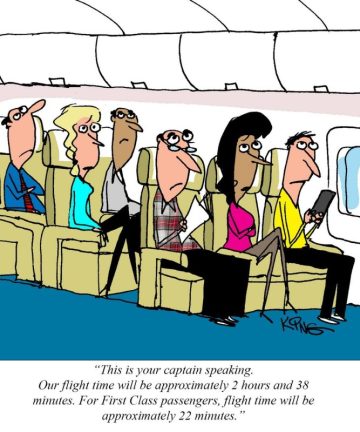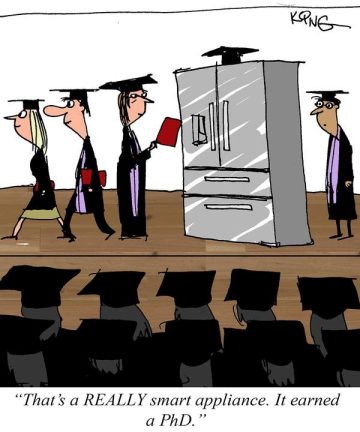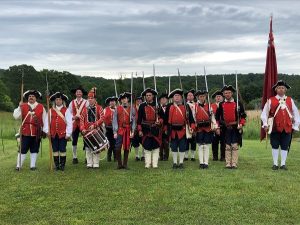Regional News
Bill to repeal Maryland state song advancing in Legislature
A bill that would repeal Maryland’s state song “Maryland, My Maryland!” on the grounds it contains offensive and outdated language is advancing in the Legislature this week.
The song, penned in 1891, labels President Abraham Lincoln as a “despot,” poses a call to action to defend the state from the Union, and personifies the state as “not dead, nor deaf, nor dumb,” among other provocative lyrics.
“It’s way pastime to eliminate this outdated and offensive tune from our law books,” Sen. Cheryl C. Kagan, D-Montgomery, SB08’s Senate sponsor, told Capital News Service.
Kagan says now is the proper time to repeal the song as Confederate-era imagery incorporated into state symbols is being removed nationwide; she believes the legislative repeal process can be quick, allowing for more time to be directed toward pressing issues such as COVID-19 recovery initiatives.
“Repealing the state song should be accomplished in five minutes so we can go back to the people’s business, really pressing business,” Kagan said.
During a Feb. 24 House hearing on the bill’s counterpart HB0667, Comptroller Peter Franchot, D, offered testimony in support of the bill.
“There was only one correct ‘side’ to be on during the Civil War, and I think it’s time our state song recognizes that,” Franchot said.
In testimony opposing the bill, John T. Barringer II of Eldersburg, Maryland, wrote that he worries about the precedent set by removing something so crucial to the state’s identity.
“This legislation is not in Maryland’s past, present, or future interests. It censors our state’s distinctive story, condemns the state song on the gallows of a national culture cleansing frenzy, and deprives future generations of learning some tough truth of a cataclysmic epoch in our federal and state history,” Barringer said.
A number of institutions have removed the state song from their repertoires in recent years.
The University of Maryland announced in 2017 its marching band the Mighty Sound of Maryland would abstain from playing the song on campus going forward; The Preakness Stakes followed suit in 2020 announcing they would no longer play the song during the annual race at Pimlico Race Course.
In 2017, days after violence erupted at a white supremacist protest against the removal of a Gen. Robert E. Lee monument in Charlottesville, Va., then-mayor Catherine Pugh arranged the removal of four Confederate monuments in Baltimore; in 2016, a seven-member panel formally suggested the removal of two of the statues.
Officials have attempted to repeal “Maryland, My Maryland” on multiple occasions; Kagan has sponsored the effort twice previously but believes this is the year it will be successful.
“I think George Floyd’s murder and the subsequent focus on equity and Black Lives Matter has shone a spotlight on Confederate-themed symbols…the attempt to repeal it, or repeal and replace it has been around for decades, and I’m very hopeful that with new leadership in the House and new leadership in the Senate, as well as increased sensitivity to the issues this will be the year we finally get it done,” Kagan said.
Kagan has not suggested a replacement for the state song and says the issue can be addressed at a later date.
“In the future, if someone wants to propose a new state song, that’s a conversation for another time. But I think what we need to do this year is just kill it, take it out of our law books, and prepare to move forward without that stain on our state’s reputation,” Kagan said.
The House bill advanced on Thursday and is expected to come up for a final vote in that chamber soon.
If SB0008/HB0667 passes, the song would be removed on July 1.
Two other bills — HB0389 (cross-filed with SB0087) and HB0437 — that aim to repeal and replace the state song are also going through the state Legislature.
By CALLAN TANSILL-SUDDATH
Capital News Service
Here are the lyrics to the Maryland State song.
Maryland, My Maryland
- I
The despot’s heel is on thy shore, - Maryland!
His torch is at thy temple door, - Maryland!
Avenge the patriotic gore
That flecked the streets of Baltimore,
And be the battle queen of yore, - Maryland! My Maryland!
II
Hark to an exiled son’s appeal,- Maryland!
My mother State! to thee I kneel, - Maryland!
For life and death, for woe and weal,
Thy peerless chivalry reveal,
And gird thy beauteous limbs with steel, - Maryland! My Maryland!
III
Thou wilt not cower in the dust, - Maryland!
Thy beaming sword shall never rust, - Maryland!
Remember Carroll’s sacred trust,
Remember Howard’s warlike thrust,-
And all thy slumberers with the just, - Maryland! My Maryland!
IV
Come! ’tis the red dawn of the day, - Maryland!
Come with thy panoplied array, - Maryland!
With Ringgold’s spirit for the fray,
With Watson’s blood at Monterey,
With fearless Lowe and dashing May, - Maryland! My Maryland!
V
Come! for thy shield is bright and strong, - Maryland!
Come! for thy dalliance does thee wrong, - Maryland!
Come to thine own anointed throng,
Stalking with Liberty along,
And chaunt thy dauntless slogan song, - Maryland! My Maryland!
VI
Dear Mother! burst the tyrant’s chain, - Maryland!
Virginia should not call in vain, - Maryland!
She meets her sisters on the plain-
“Sic semper!” ’tis the proud refrain
That baffles minions back again, - Maryland!
Arise in majesty again, - Maryland! My Maryland!
VII
I see the blush upon thy cheek, - Maryland!
For thou wast ever bravely meek, - Maryland!
But lo! there surges forth a shriek,
From hill to hill, from creek to creek-
Potomac calls to Chesapeake, - Maryland! My Maryland!
VIII
Thou wilt not yield the Vandal toll, - Maryland!
Thou wilt not crook to his control, - Maryland!
Better the fire upon thee roll, Better the blade, the shot, the bowl,
Than crucifixion of the soul, - Maryland! My Maryland!IX
I hear the distant thunder-hum, - Maryland!
The Old Line’s bugle, fife, and drum, - Maryland!
She is not dead, nor deaf, nor dumb-
Huzza! she spurns the Northern scum!
She breathes! she burns! she’ll come! she’ll come! - Maryland! My Maryland!
Regional News
House Narrowly Passes Bill to Include Citizenship Question in Census
WASHINGTON — The Republican-led House Wednesday passed a bill to add a citizenship question to the decennial census and exclude non-citizens from the population count used to determine federal representation.
No House Democrats voted for the bill, which passed along party lines 206-202. The vote sends the bill to the Democratic-controlled Senate, where it is unlikely to move forward.
Census data determines the number of congressional districts in each state and the amounts of federal funding distributed to each state.
“Common sense dictates that only American citizens should be counted for electoral apportionment,” House Speaker Mike Johnson, R–Louisiana, said in a statement after the vote.
Johnson said including non-citizens in congressional reapportionment rewards illegal immigration and cities with relaxed immigration policies with more representation.
However, Democrats argued Wednesday that the bill would unfairly harm people who came to the country both legally and illegally with less federal funding and weaker representation of their communities.
“We don’t need to start finger-painting on the Constitution with this silly election-year proposal,” Rep. Jamie Raskin, D–Maryland, said on the House floor. “This is a land that is built on immigration.”
The census last included a citizenship question in 1950. During his presidency, Donald Trump attempted to add the question to the 2020 census but was blocked by the Supreme Court.
Senate Majority Leader Chuck Schumer, D–New York, was critical of the citizenship question in 2019 when he accused Trump of “intimidating communities of color.” House Republicans want only the number of U.S. citizens in an area to count for representation. If enacted, this legislation could decrease federal representation for states with large immigrant populations, including California, Florida, and Texas.
“The mere presence of illegal immigrants in the United States is having a profound impact on the outcomes of elections, skewing the representation of Americans,” Rep. Chuck Edwards, R–North Carolina, said on the House floor.
Edwards, the bill’s sponsor, added that non-citizens have no allegiance to the United States and should not count for representation.
Rep. Nanette Barragán, D–California, countered that adding a citizenship question would have a “chilling effect” on census participation by immigrant communities.
Opponents of the bill said that immigrant communities might be afraid to answer the census with a citizenship question over fears of being reported to law enforcement agencies.
“This would deprive immigrants of representation and resources,” Barragán said.
Johnny Zuagar, president of the American Federation of Government Employees Census Council 241, told Capital News Service Tuesday that Trump’s push for adding the question to the 2020 census caused chaos and difficulty for census workers.
Zuagar said U.S. Census Bureau employees had to work hard to regain trust in immigrant communities. “Our staff has done a great job of just trying to build relationships throughout the country with different groups, especially Hispanic groups,” Zuagar said. “We just don’t want to add more challenges.”
Census employees cannot legally provide identifiable information to anyone, including law enforcement.
By KATHARINE WILSON
Capital News Service
Regional News
Van Hollen, Other Maryland Democrats and Teachers Slam Tennessee Law Arming Educators
WASHINGTON – Maryland federal and state lawmakers and local education groups are speaking out against allowing teachers to carry firearms in classrooms, adding that they are confident that a bill allowing such a practice won’t come to fruition in the state.
“The simple truth is that the vast majority of Americans want commonsense reforms like stronger background checks and an assault weapons ban to keep our schools safe from the epidemic of gun violence,” Sen. Chris Van Hollen, D-Maryland, said in a statement.
He added: “Despite that, some legislators continue to press for policies like this one in Tennessee to allow for concealed carry for handguns on school grounds. It’s a misguided and dangerous approach that undermines the safety and well-being of both students and educators.”
Maryland is one of 14 states, and the District of Columbia has some law preventing school boards from giving K-12 educators the authority to carry firearms, according to the nonprofit firearm training organization Faster Saves Lives.
Maryland law prevents anyone from carrying or possessing a firearm in public and private K-12 schools, according to the Giffords Law Center to Prevent Gun Violence, a nonprofit based in California.
The law was extended to higher education institutions in March 2023.
Tennessee is the most recent state to pass legislation in stark contrast to Maryland’s law.
Tennessee Gov. Bill Lee signed a law on April 26 allowing teachers and other school staff members to carry firearms on school grounds. The law was passed after three 9-year-old students and three adults were killed last March in a shooting by a former student at the Covenant School in Nashville, Tennessee.
“There are no circumstances where educators should carry weapons on school property,” said Cheryl Bost, president of the Maryland State Education Association. “Our educators are trained professionals in the field of education. And that’s what we want to do in our classrooms and our work sites, whether that’s bus drivers, secretaries or teachers.”
Tennessee teachers still need approval from their school’s director and principal to carry firearms. Educators would also have to obtain a handgun permit and complete at least 40 hours of approved training from the Police Officer Standards and Training Commission in addition to the 40 hours of basic training.
“That is a pretty insignificant amount of time,” said Maryland Del. Jared Solomon, a Democrat. “Considering the amount of time that law enforcement has to train and create scenarios and figure out how to confront these kinds of situations.”
Solomon started his career as a high school teacher in Baltimore City before moving to the policy side of education. He believes that another problematic aspect of Tennessee’s bill is that it won’t allow parents to be notified if their students’ teachers are carrying guns.
“If you didn’t want your child in a classroom with a teacher that was carrying a gun, you wouldn’t have that option, which I think is not really parental choice,” Solomon said. “I know certainly, I would not want my child in a classroom where the teacher is carrying a weapon.”
Mark Pennak, president of the gun owners’ rights organization Maryland Shall Issue, doesn’t see Tennessee’s law as a problem.
Pennak believes that teachers serve as the “first line of defense for students” and that those willing to be trained and who can carry a gun should be allowed to.
“The whole idea of concealed carry is that the mass killer intruder does not know who is armed,” Pennak said in an email. “If the information is shared with parents, that advantage will disappear, and the armed teacher would be in the same position as the uniformed school resource officer – the first target.”
Pennak added that programs, like the nonprofit organization FASTER, help train school faculty to ensure that they are not risking the students’ safety.
“Trained teachers do not put their children at risk,” Pennak said.“That is what the training is for. And any such minimal risk is far outweighed by the protection that an armed teacher can provide right at the outset of a school shooting.”
The number of school shootings in K-12 schools in the United States has increased each year from 2021 to 2023, according to the K-12 School Shooting Database created by data scientist David Riedman.
The database defines a school shooting as an incident where a “gun is fired, brandished (pointed at a person with intent), or a bullet hits school property, regardless of the number of victims, time, day, or reason.”
In 2021, 256 shootings were recorded in the database. That number jumped to 308 school shootings in 2022 and 348 in 2023.
Sen. Ben Cardin, D-Maryland, said he does not believe that allowing educators and other school professionals to carry guns would solve the mass shooting epidemic in schools.
“We do not need more guns in schools, and we do not need educators and other school professionals carrying guns,” Cardin said in a statement. “Teachers are hired to teach, not be security guards. The answer to stemming the epidemic of gun violence in our schools is not to bring more guns into the schools.”
Jaime Lennon, spokeswoman for Maryland Democratic Rep. Dutch Ruppersberger, said that the possibility of a bill like Tennessee’s being introduced at the federal level is slim. Lennon added that no research suggests that arming teachers would solve the problem.
“Congressman Ruppersberger would strongly oppose it in any event, quite simply, because teachers have stated over and over that they do not want to carry guns into their classrooms,” Lennon said. “There is also zero scientific evidence that this is a realistic solution to an incredibly complex problem. If more guns equaled less violence, we would be the safest country on the globe.”
Maryland Democratic Rep. Steny Hoyer said “Marylanders have long known that the answer to stopping mass shootings does not lie in increasing the number of firearms on American streets.”
“I’m disappointed to see this law passed in Tennessee, but I remain confident that under the leadership of Governor (Wes) Moore and our strong Democratic delegation – Maryland will continue to be a state that works towards ending gun violence once and for all,” Hoyer said.
Both Bost and Solomon said they were confident that the Maryland legislature would not allow teachers to carry guns in schools anytime soon.
“We’ve really instituted a lot of strong firearm safety standards and laws in the state that I think are a much better step forward than just saying we’re going to introduce more firearms into a school and leave that task to a teacher,” Solomon said.
Bost added that a deeper investment in school counselors and psychologists to help students deal with trauma, along with reducing class sizes to help teachers better cultivate relationships with students, could help prevent situations where students feel the need to resort to violence.
“Guns have never been, and will never be an answer, whether it’s in our society or our schools,” Bost said. “It’s actually getting into our classes and providing the resources. We are doing a good job with that here in Maryland. We can always do better.”
Maryland Del. Susan McComas, a Republican, agreed that the state would never pass a law similar to Tennessee’s legislation, adding that Maryland should consider using resources officers who can work with students.
“There are just too many what ifs and scenarios where a teacher might be attacked by a distraught student or a group of students to get the gun,” McComas said, referring to Tennessee’s law.
By TORRENCE BANKS
Capital News Service
Regional News
House Votes to Consider Bill to Add Citizenship Question to Census
WASHINGTON – Since 1790, the Census Bureau has taken a head count of every person, regardless of citizenship, in the United States so Congress can determine how votes are distributed among members of the House of Representatives and Electoral College.
House Republicans want to make this process a thing of the past.
The House Tuesday voted 205-195 along party lines to consider a bill that could add a citizenship question to the decennial census and exclude non-citizens from the population used to calculate congressional district representation.
Then, President Donald Trump pushed to add the citizenship question to the 2020 census but was blocked by the Supreme Court in 2019 due to concerns about dishonest disclosure of the reason behind asking the question.
The census last asked the entire population about citizenship status in 1950. Since then, the government has presented a citizenship question to a sample of households through the American Community Survey and an occasional added survey to the census.
The census is not only used to determine the number of House members and Electoral College votes per state but also to decide how to distribute federal resources across the country.
Democratic lawmakers, including New Mexico Rep. Melanie Stansbury, said the citizenship question could make non-citizens afraid of filling out the census, decreasing federal funding and representation.
“These counts would have devastating implications for not only our electoral system but the well-being of our families and communities,” Stansbury said Tuesday during a debate on the House floor.
Republicans, such as New York Rep. Nick Langworthy, argued that including non-citizens in the population for apportionment rewards illegal immigration and is unfair to U.S. citizens.
“Allowing non-citizens to vote dilutes the voice of the American citizen and opens the door for manipulation and exploitation of our electoral system,” Langworthy said.
Removing the weight of non-citizens in federal representation distribution could change the House’s party divide.
States with large immigrant populations – namely California, Texas, and Florida – would each have had one less representative if “unauthorized immigrants” had been excluded from the post-2020 census apportionment, according to a 2020 Pew Research Center report.
The 14th Amendment states that the apportionment of representatives is determined by a count of the “whole number of persons.”
Rep. Jamie Raskin, D–Maryland, said during a House Rules Committee meeting Monday that the bill was unconstitutional under the 14th Amendment, adding that the bill would exacerbate the undercount of the Hispanic population.
“This bill would destroy the accuracy of the census,” Raskin said.
According to Census Bureau reports, the 2020 census had a statistically significant undercount of Hispanics in the United States, with almost 5% not counted. This undercount has been attributed to the COVID-19 pandemic and fears that answers to census questions could be shared with other agencies.
The Census Bureau cannot legally share identifiable information with anyone, including law enforcement.
However, Rep. Erin Houchin, R–Indiana, said Tuesday that since the proposed legislation would still allow counting non-citizens in the census, the change would not greatly impact federal assistance or an accurate population count, calling such claims a “red herring.”
A 2019 Census Bureau report said a citizenship question is sensitive for non-citizens and could affect the self-response rate.
Beyond the impacts of political representation, Johnny Zuagar, president of the American Federation of Government Employees Census Council 241, told Capital News Service that the bill, even if not passed, could complicate the jobs of census employees and the underfunded Census Bureau.
Bringing up the possibility of a census citizenship question again, Zuagar said, will likely make immigrants unsure if they can trust the Census Bureau not to report them to immigration authorities.
Census workers would have to take time to explain the citizenship question and the safety of the responses, Zuagar said, complicating their work.
During the 2020 census, he said, census employees had to work with immigrant communities to regain that lost trust.
“We’re just here to measure the country and follow the Constitution. You can trust us,” Zuagar said.
The House will likely vote on the bill this week. If passed in the House, the measure would move to the Senate, controlled by the Democrats.
By KATHARINE WILSON
Capital News Service
Regional News
Attempts to Give Fetuses Personhood Status Seen Across State Legislatures
“Fetal personhood” has emerged as the next step of the anti-abortion movement.
By amending state constitutions or passing new laws, several state legislatures across the country are attempting to give fetuses the rights and protections of any human under the law.
Legislation has been proposed in at least 13 states and at the federal level. The states include Georgia, Idaho, Indiana, Kansas, Massachusetts, Missouri, New Hampshire, New York, South Carolina, Oklahoma, Vermont, Virginia and West Virginia.
While language differs from state to state, the idea remains the same: a fetus is redefined as an “unborn child” and will be considered human for legal purposes.
In addition to “fetal personhood” bills, other states are considering legislation that identifies a fetus as an “unborn child” or uses language that indirectly personifies a fetus, including criminalizing abortion as assault or murder or requiring child support payments beginning at conception. Among those states are Alabama, Florida, Hawaii, Kansas, Missouri, North Carolina, Oklahoma, Rhode Island, and South Carolina.
While the reality of these bills becoming law is relatively low, they come as part of a wave of legislation to further restrict abortion access following the Dobbs decision from the Supreme Court in June 2022. The decision overturned Roe v. Wade, which had given constitutional protections to abortion access.
National organizations, such as the National Association of Christian Lawmakers (NACL), have pushed these “personhood” bills as well as other anti-abortion legislation in legislatures nationwide. The NACL has had a direct influence on legislation in states like Missouri.
Jason Rapert, founder and president of NACL, said that the faith-based organization’s first piece of model legislation was the Heartbeat Act, which outlaws abortion after a fetal heartbeat is detected. Following the adoption of this legislation in numerous states and the Dobbs decision, the NACL shifted its focus to life-at-conception legislation.
“In this country, up until 1973, it was well understood that those babies were human beings … It’s inherent as a part of many of these bills because it is protecting those lives,” Rapert said.
But while anti-abortion advocates say these bills would protect the “unborn,” abortion rights advocates say that these “personhood” bills would not be beneficial to pregnant people. Taylor Morton, a lobbyist and policy analyst for Planned Parenthood Great Plains Votes, said that anti-abortion bills are especially prevalent this legislative session.
“The effort to establish “fetal personhood” is a disingenuous tactic used by those who oppose comprehensive sexual, reproductive healthcare,” Morton said. “It elevates the rights of a fetus to be equivalent, or even superior, to those of a pregnant person.”
Morton said that sometimes, these bills can be deceiving and seem to be promoted as beneficial to women.
“On the surface, these bills appear to support pregnant people and families,” Morton said. “But if you look closer, the bills are nothing more than an attempt to further an anti-abortion agenda by codifying that fetal personhood language.”
Efforts Across State Legislatures
Kansas has seen many bills that would make abortion more difficult to access despite voters rejecting an amendment in 2022 that would have said there was no right to an abortion in the state.
Senate Bill 425 and House Bill 2653 in Kansas would establish an unborn fetus as eligible for child support.
Bill 2653 passed through the House 83-40, with mostly Republican support, at the end of March. The bill was also introduced and received in the Senate, which referred it to the Senate Committee on Federal and State Affairs. Because the legislature is taking its April hiatus from bill hearings, the bill will not pass through the committee and on to the Senate during this legislative session.
Sen. Ethan Corson, D-Prairie Village, said that bills are not labeled as “fetal personhood” because they would be met with more resistance.
“The concept is embedded in a different, or less clear purpose,” Corson said.
He said he could see these types of bills potentially leading to limited abortion access.
“If you say that an unborn fetus has the same legal rights as a pregnant person, then that calls into question existing laws around reproductive healthcare and access to abortion,” Corson said.
In Florida, the state Supreme Court – five of the seven justices were appointed by Gov. Ron DeSantis – ruled to allow a proposed constitutional amendment guaranteeing abortion rights on November’s general election ballot.
The same day, the court also ruled that the state’s newly enacted ban on abortions after six weeks can take effect May 1.
This year, the state’s legislature considered, but did not pass, a bill that would effectively ban all abortions unless a mother’s life was in danger. Similar to so-called “fetal personhood” proposals in other states, the bill declared that “a person exists from the moment of fertilization” and called legal abortions “a crime against humanity.”
The “fetal personhood” bill, introduced by Republican Reps. David Borrero of Doral and Mike Beltran of Apollo Beach, languished in committees without a hearing or formal vote.
The ban on abortions after six weeks, before many women realize they are pregnant, includes an exception to save the life of the mother. Abortions for pregnancies involving rape or incest would be allowed until 15 weeks of pregnancy, as long as a woman provides documentation, such as a restraining order or police report.
But on the same day, in another case, the Florida Supreme Court agreed to allow voters in November to decide whether to guarantee abortion rights in the state, effectively overturning both the 15- and six-week abortion bans if 60% of voters approve under a new constitutional amendment.
Republicans have moved quickly to campaign against the abortion vote already, calling the amendment deceptively written and an “extreme, unlimited abortion” plan. The amendment would guarantee women the right to abortions before fetal viability, generally recognized around 24 weeks.
In Missouri, efforts to personify fetuses have been seen last legislative session and this session. Sen. Mike Moon, R-Ash Grove, and Rep. Brian Seitz, R-Branson, have proposed similar bills that would grant a fetus the same rights and privileges of any Missouri resident, beginning at conception.
More indirect efforts to establish “personhood” have included a bill from Rep. Raychel Proudie, R-Ferguson, that allows child support to be requested beginning at six weeks from conception. Reps. Michael Burton, D-Lakeshire, and Dean Van Shoiack, R-Savannah, have proposed identical bills that would prevent “unborn children” from being considered employees for civil action purposes.
The bill from Van Shoiack is the only one that has seen any traction this session, the rest have been stuck in committees or waiting to be referred to a committee. Van Shoiack’s bill was passed out of committee and is awaiting floor action.
Simultaneously, initiative petition acts have picked up steam this year – both to ban abortion and to enshrine abortion rights in the state constitution.
With abortion-related initiative petition efforts growing, the Missouri legislature has also made progress in the fight to limit the ability of Missourians to change the state constitution. Progress has been slowed by Democratic filibusters and disagreements over “ballot candy.”
In this case, it refers to provisions that state that anyone who isn’t a Missouri resident and a U.S. citizen is barred from voting on constitutional amendments and that constitutional amendments funded or sponsored by governments of foreign countries or foreign political parties are unlawful. This is referred to as “ballot candy” because these provisions already exist in federal law.
The Next Steps of the Anti-Abortion Fight
Rapert of NACL, the organization promoting fetal person legislation, said the next step will be working to outlaw abortion pills.
In Virginia, which is surrounded by several states where abortion is entirely illegal or severely restricted and has become a refuge for those seeking abortions in the South, lawmakers efforted to protect access to contraceptives.
Virginia Gov. Glenn Youngkin amended bills to codify such access and provide coverage through health insurance.
Senate Bill 237 and House Bill 609 ensured health care providers the right to provide contraceptives and contraception-related information and allowed enforcement of the provisions through the attorney general’s office.
Youngkin’s changes make the bills a public policy “suggestion” rather than law, according to the bill’s Senate patron.
The governor “continues to support access to contraception while ensuring the protection of constitutional rights,” Youngkin’s press secretary, Christian Martinez, recently stated to Bloomberg News.
The governor’s amendment to the health insurance bill allows organizations to opt out of coverage based on religious and ethical beliefs. Lawmakers voted to reject his suggestion.
Reporters Rylie Oswald Al-Awhad of the KU Statehouse Wire Service, Serra Sowers of Fresh Take Florida and Emily Richardson of VCU Capital News Service contributed to this report. Murphy reports for the Missouri News network.
By EMMA MURPHY
Missouri News Network
Regional News
RideSmart Introduces New Commuter Bus Service from Waterloo Park and Ride Lot
RideSmart is thrilled to announce the launch of an exciting new commuter bus service starting Monday, May 13, 2024. This service will operate Monday through Friday, offering convenient transportation from the Waterloo Park and Ride lot at 1812 John Mosby Hwy, Winchester, VA, to Rosslyn, VA, and Washington, DC.
Commuters in the region can now enjoy a stress-free journey to their destinations, thanks to RideSmart’s comfortable and eco-friendly buses. With spacious seating, onboard amenities, and complimentary Wi-Fi, passengers can maximize their travel time while feeling proud of their contribution to the environment by reducing their carbon footprint.
To celebrate the inauguration of this new service, RideSmart warmly invites you to a ribbon-cutting event on Wednesday, May 15, 2024, at 5:15 p.m. This event, held at the Waterloo Park and Ride lot, will feature remarks from local officials, RideSmart representatives, and, most importantly, community members. Your presence is highly valued, and we look forward to celebrating this milestone with you.
“We’re excited to introduce our new commuter bus service, providing residents with a convenient and sustainable transportation option,” said Becky Sandretzky, Commuter Assistance Program Coordinator at RideSmart. “We look forward to serving the community and beyond, helping commuters reach their destinations efficiently and comfortably.”
Don’t miss this opportunity to be part of the RideSmart journey! Let’s roll into a better commute!
Regional News
Baltimore Port closure creates uncertainty for businesses
Before the bridge’s collapse, Johnson wasn’t aware that the Port of Baltimore was a main hub for plywood. He worries how this may affect his furnishing business but also how the port’s closure may impact Baltimore’s small business economy.

Su Casa Furniture owner Nicholas Johnson is concerned that plywood, a main import of the Port of Baltimore, might become scarce during an extended closure of the port. (Emily Condon/Capital News Service)
“My bigger concern is for how the ‘temporary’ adjustments to logistics may stick and become permanent,” Johnson, 39, said in an email. “Because of the timeframe for complete recovery, it is conceivable that many businesses that make arrangements to utilize NY, Philly, Norfolk, Wilmington, and Richmond in the short term may stick with it.”
Many other Baltimore businesses share his concerns. The March 26 collapse of the Key Bridge left six dead and left much of Baltimore’s port blocked for imports and exports. Some 51,000 people rely on the port, either directly or indirectly, for their jobs. Because of this threat to the economy, Governor Wes Moore has approved $60 million in temporary assistance to workers and businesses.
Some high-profile companies immediately shifted gears: first, Royal Caribbean International moved its Vision of the Seas ship to sail from the port in Norfolk, Virginia. Then, CSX Corp., a major freight rail company, decided to add a new train route to bring supplies from Baltimore to New York. The U.S. Small Business Administration said more than 1,000 businesses in the Baltimore area have applied for emergency loans following the bridge collapse.
For trucking companies based in the city, the port closure resulted in major shifts in their operations and forced some drivers out of work. Universal Intermodal Services Inc.’s Dundalk location currently has at least 12 truckers out of work, according to fleet manager RJ Martin.
“It’s really screwed up the trucking market in this whole area as guys are no longer working in this area,” Martin said. “They’re having to go somewhere else or just be out of work and try and collect unemployment – which not everyone will be approved for.”
Martin is hopeful that once the Baltimore channel is cleared and the port reopens, operations for Baltimore shipping companies will return to normal. The U.S. Army Corps of Engineers said it hopes to have the Port of Baltimore partially reopened by the end of April and fully open by May.
Other businesses don’t face such a severe economic impact, but they consider the loss of the Key Bridge as an important symbolic moment for the community. For Brandy Teresi, 48, co-owner of Robbie’s Bar and Grill in Sparrows Point, the Key Bridge was “a part of your identity and who you are as an individual, which is weird because it’s just a bridge.”
The only small immediate impact for Robbie’s Bar and Grill has been rerouted deliveries. One quirk: the supplier of the bar’s CO2 tanks, which pump the beer taps and soda machines, needs to go around the city because regulations don’t permit the tanks in the Harbor Tunnel on Interstate 895, Teresi said.
Other businesses across the city are still navigating the uncertainty that comes with the collapse. Canton-based Mama’s on the Half Shell has not experienced any direct economic impacts. Still, some customers from Anne Arundel County have a longer drive to the restaurant, said Maurico Guevara, a veteran employee at Mama’s. The restaurant planned to hold a fundraiser on April 10 and donate a portion of their profits to victims of the collapse, he said.
Megan Gardner, marketing director for the restaurant group that owns Mama’s, doesn’t predict any problems with food shipments since they obtain their food from local suppliers. The biggest impact is emotional.












































































